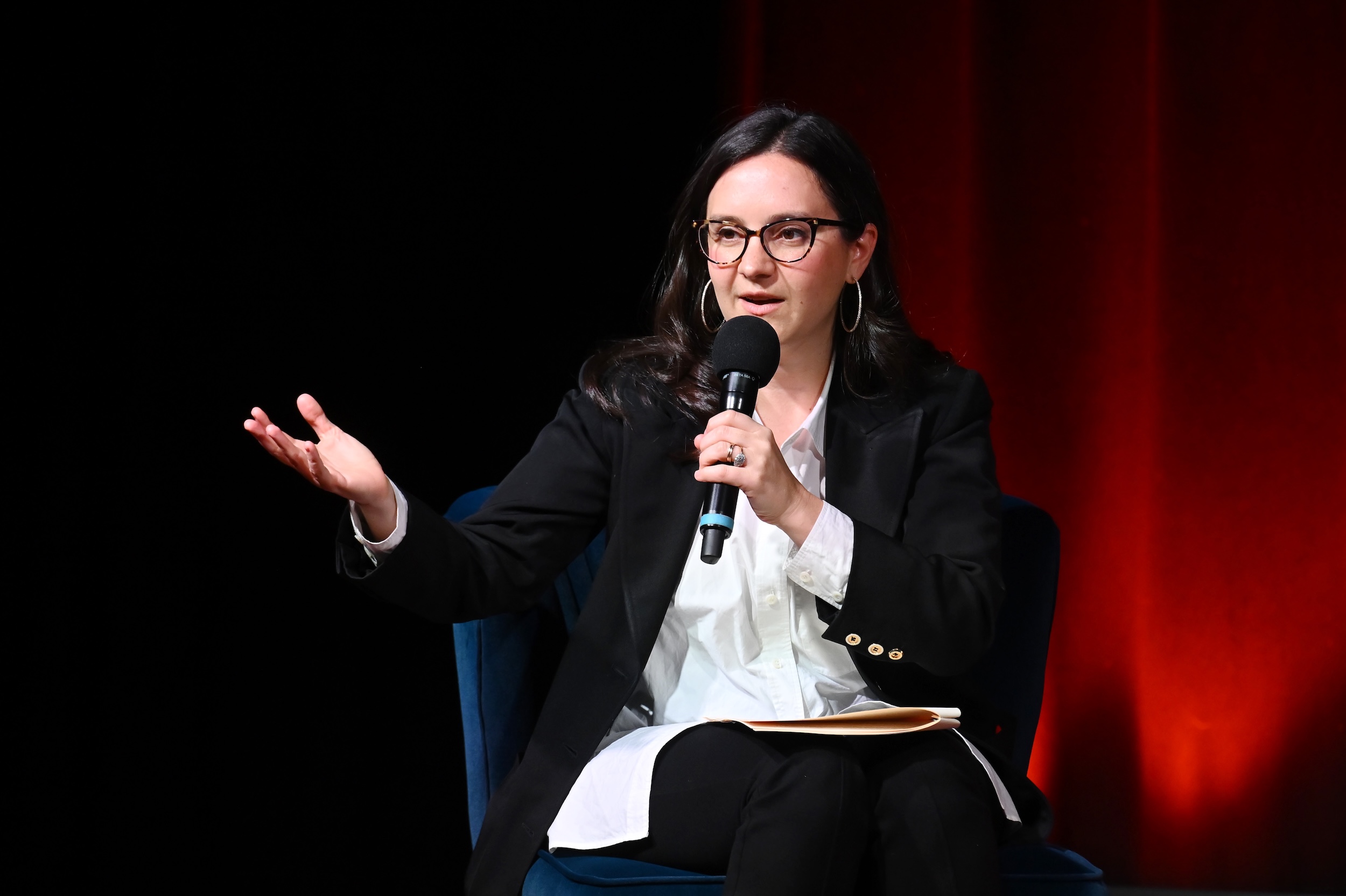Imagining the end of the world is a timeless tradition. Myths and stories about the apocalypse are found across cultures, foretelling a day when Earth as we know it will no longer exist. This grim but gripping topic even generates the occasional headline: Last month, Elon Musk cited the possible incineration of Earth to justify his dreams of a multiplanetary civilization. And in fall 2024, scientists spotted an Earth-like planet that had outlived its star, "offering a glimpse into the possible survival of planet Earth in the distant future," according to their study.
But despite such prognostications, the specific fate of Earth remains a source of speculation. We know the basics: The Sun, a main-sequence star, is gradually becoming brighter and hotter, which will eventually dehydrate Earth and render it uninhabitable in about two billion years. After that, about five or six billion years from now, the Sun will finally exhaust its hydrogen fuel, triggering its red giant phase, when it will expand by more than 100 times its current diameter.
Mercury and Venus will definitely be swallowed by the Sun as it balloons in size, but it's unclear whether the Earth will be likewise engulfed, or merely flame-broiled into an unrecognizable lifeless husk; there are no "good" options here. But it's a genuine scientific mystery.
"This would all be moot if the Earth were much closer to the Sun," Melinda Soares-Furtado, an assistant professor of physics and astronomy at the University of Wisconsin-Madison who studies planetary engulfment, told me in an email. "However, the boundary between outside the engulfment radius and engulfment is only a few percent in distance. This means that small uncertainties make it impossible to confidently predict the fate of our planet."
In the absence of a clear answer, why not turn to apocalyptic myths and literature for guidance? As it turns out, there is a resonance between cultural expressions about the end of Earth, and the real scientific predictions that our planet will persist either as a dead frozen world, or will be melted down to its elemental parts in the stellar cauldron. Will Earth end with a bang or a whimper, to channel T.S. Eliot? Or, as Robert Frost asked, in fire or ice?
To test these apocalyptic waters, I asked a group of scholars about the real and imagined fates of Earth, and whether they had any personal allegiance to either Team Fiery Sun Death or Team Lifeless Husk.
Tim Burbery, a professor of English at Marshall University, is a good person to field such questions. As an expert on geomythology, a field that explores how natural phenomena are expressed in myths and legends, he has spent years drawing links between stories and science. Interestingly, some mythologies don't predict an end to Earth at all.
"The simple fact that the universe will come to an end isn't assumed by all cultures," Burbery said in an email. "Aristotle, for instance, argued that the universe is eternal, and that claim had a powerful influence until the Big Bang was theorized. It held sway in various cosmological steady-state models for a long time. The Big Bang [theory] was resisted, in part, because of the notion of an eternal universe."
Aristotle's fixation on eternity would presumably place him on Team Lifeless Husk. This view of an infinite Earth (even as a stand-in for the entire universe) was shared by many other thinkers in antiquity, according to Helen Van Noorden, fellow and college associate professor in classics at Girton College in the University of Cambridge.
"Most ancient philosophies before the advent of Christianity are not genuinely expecting the end of the world since it was broadly supposed that the world was created to continue (even if the human race did not)," Van Noorden, who studies apocalyptic and eschatological literature in the Hellenistic and Roman worlds, said in an email.
"But indeed they talk about it!" she added. "Poetic and philosophical writings often focus on universal cataclysm, earthquake, conflagration, or unravelling of the world-web."
Burbery outlined many of these cataclysmic visions for me, including the Zoroastrian apocalypse, in which the Sun stands still for 10 days, while the Moon darkens and earthquakes roil our world, or that of the Talmud, which states that Earth will exist for 6,000 years, then slip into a period of non-existence for 1,000 years.
Then there's the high drama of the Christian end times, which includes the eschatological interpretation of Isaiah 65:17's mention of the creation of "new heavens and a new Earth," and the prediction that "the heavens will pass away with a roar, and the heavenly bodies will be burned up and dissolved, and the Earth and the works that are done on it will be exposed" (2 Peter 3:10). Isaiah seems to be on Team Fiery Sun Death, at least in spirit, because presumably the old Earth would need to be destroyed to make way for the new one. Peter, on the other hand, foretells the burning of heavenly bodies but seems to make a carveout for Earth, so I'm putting him on Team Lifeless Husk.
Though Van Noorden has no personal preference about the fate of Earth, she said she is fascinated with "the use of apocalyptic literature within antiquity as a form of consolation. …One famous example is Seneca's Consolation to Marcia, which contains at ch. 26.6 a Stoic vision of cosmic destruction by fire as a way of putting individual grief into perspective."
Indeed, imagining the end of everything is one way to come to terms with loss and mortality. For Ricardo Yarza, a graduate student in astronomy at the University of California, Santa Cruz, this reckoning with our own impermanence is part of the allure (and dread) of planetary engulfment, a topic he studies.
"People have historically held very anthropocentric views of the universe," Yarza said in an email. "We now know that neither Earth nor the Sun are at the 'center' of everything, that there are other galaxies, and so on. These discoveries force us to consider the possibility that the universe isn't 'fine-tuned' for us and that maybe we are not being nursed or protected."
With the loss of a special place in the universe, the pendulum swings the other way: It's a miracle that we're here at all. "Even elements of our existence as seemingly unwavering as our planet and our star are in fact temporary," Yarza noted. "We exist at a particular point in time in a universe that is ever-changing, ultimately in ways hostile to us."
"What makes Earth remarkable … is its tenure," Soares-Furtado said. "Our planet has remained in the habitable zone for billions of years, enabling complex life to emerge over long timescales. No other planet in our solar system has had—or will have—such a remarkable opportunity."
What comes after? Burbery notes that even the most catastrophic apocalypses tend to be followed by a rebirth of some kind, rather than a permanent cut to black. The concepts of reincarnation and of cycles of death and renewal are embedded in many mythologies, from the Norse Ragnarök to the Hindu notion of Pralaya. This reading can also be applied to the literal fate of Earth, as the ashes of our solar system could become the building materials of new worlds.
"The Sun will lose about half of its total mass as it evolves," Soares-Furtado explained. "This lost material will be ejected into the surrounding environment as slow-moving winds. The chemical traces of the engulfed planets will then be found in the expanding debris."
"I'm interested in exploring the plausibility of 'second-stage' planet formation," she continued. "In this scenario, the stellar wind or nebular ejecta could cool and settle into a circumstellar disk, from which planets might coalesce."
To that end, Soares-Furtado is interested in the new life that might be sparked during and after the Sun’s death.
"As the Sun's habitable zone drifts outward, new opportunities for life will arise," she said. "As the Sun expands and our planet teeters on the brink of engulfment, [the Jovian moon] Europa will find itself, for the first time, at the inner edge of the habitable zone. One can imagine a future where the thick icy shell of Europa is subject to substantial melting and the possibility of a world covered with transient surface oceans. What will be the astrobiological results? Even further into the future, the habitable zone will move out to include Saturn's moons, Titan and Enceladus."
Of all the experts I corresponded with, only Burbery expressed a slight personal preference for the future of Earth, opting for Team Fiery Sun Death.
"I lean toward the notion of catharsis, of the world ending 'cleanly' and finally, with a bang, not a whimper," he said. "Certainly, the notion of a massive conflagration provokes our imaginations," and "would seem to point to a kind of purification or catharsis. Robert Frost's speaker in 'Fire and Ice' agrees, and I have a hunch that you have or will find more folks in this camp than the 'whimper' one."
I am also on Team Fiery Sun Death. While it's compelling to think of Earth as persisting in a tun state, a shadowy, silent traveler with a storied past, that'd be a lonely fate for a once-lively world. There's something more comforting to me in Earth ultimately coming home to the star that nourished its vibrant biosphere, and possibly contributing its elemental seeds to new worlds. Contrary to expectations, however, a poll I ran on Twitter with a whopping sample size of 11 respondents showed a distinct preference for Team Lifeless Husk. It's understandable to be so attached to Earth that you never want to let it go—even only conceptually and long, long after our deaths.
Whether you root for Earth to endure as a scarred relic or to go out in a blaze of glory, these distant outcomes are just modern iterations of creative apocalyptic visions that likely date back as long as there have been humans to wonder about it.
"Thinking about the implications of these discoveries on our long-term future can be unsettling," Yarza said. "However, regardless of what happens in the end, we are fortunate to experience and learn about the world now. I find these discoveries cathartic in that sense, regardless of the specific fate of Earth."







